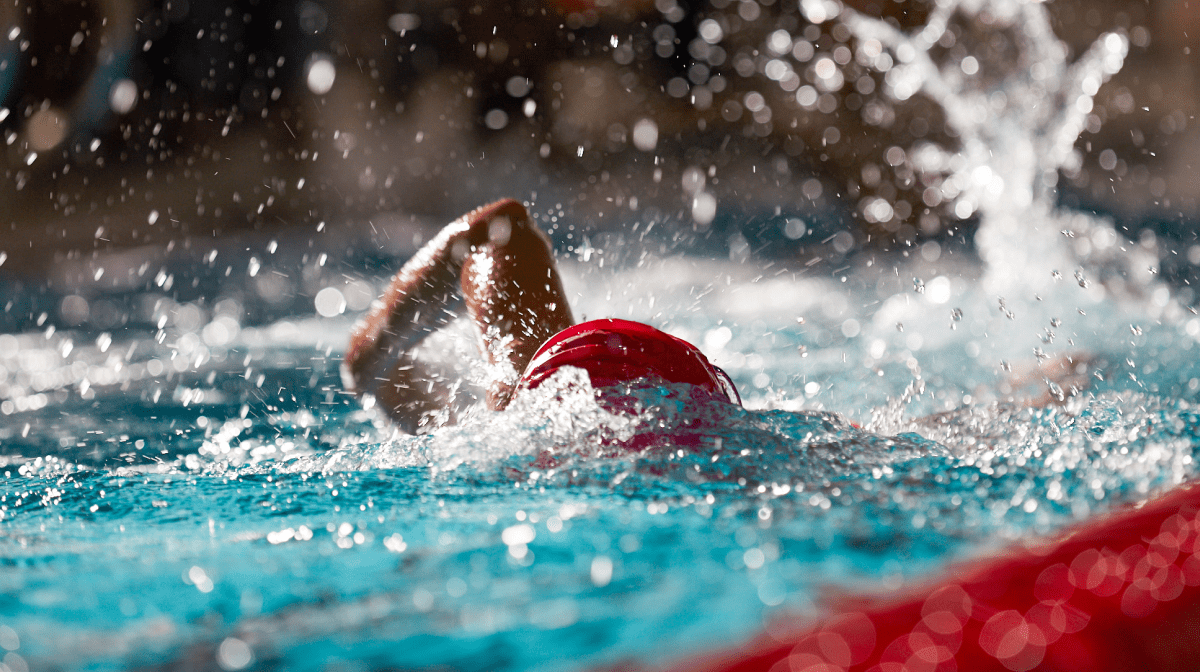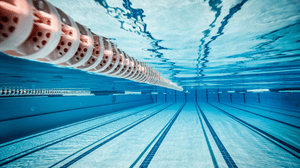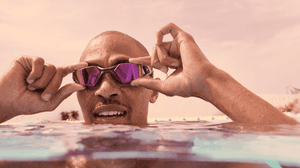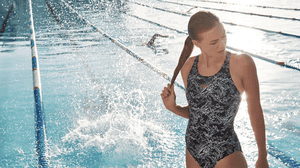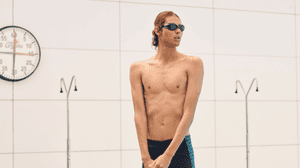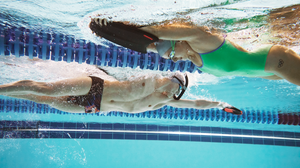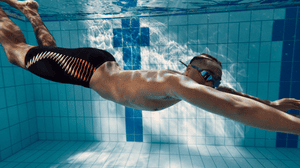
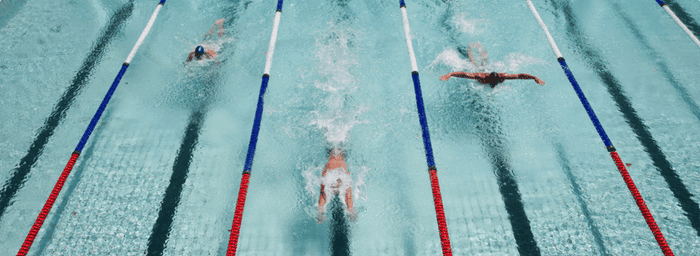
Training and technique
Once you get close to race day, you’ll be using the technique that you’re comfortable with and will be racing with for the next few months. Consequently you only want to make minimal changes to your training. You need to make the best of what you have, but it’s worth checking a few items that can really hinder progress.
The scale of the leg kick. This is a key area that often magnifies with the addition of a wetsuit. Added buoyancy and an improved body position lead to a false sense of efficiency and people start to try harder in all aspects of their freestyle. Don’t undo the good that your wetsuit’s doing by trying harder and creating more drag. When it comes to the legs, think of a pendulum effect and keep the movement at the hip tiny.
Check your stroke is keeping you straight. In open-water, only your stroke will keep you swimming straight. Sighting keeps you on course but the more you do, the more you interrupt your natural rhythm as the head lifts and the legs sink.
Check your ‘non breathing side’ arm. This is often the culprit when it comes to a straight-arm pushdown originating from the shoulder, which pushes many people off-course. Fixing this issue could be a long-term project but you could interrupt its negative effects by using a centre snorkel more often to reduce the amount you turn your head to breathe – the usual culprit which causes this issue to manifest
Train in open-water
By this I don’t just mean swimming at the local lake for an hour each week. Take a session to do, having discussed the opportunity with your coach. Take swim equipment to use and wear some drag shorts over your wetsuit. If you haven’t got an accurate, measured distance marked out in your local lake, you can use time as your measure. A time-based style of fitness block work would be ideal in a small body of water. If you can create a small marked out square or triangle with marker buoys, you can create the following session. Ask a spotter/coach/ friend to help with timing and perform single whistle blows at the end of swims to tell you when to stop. A double blow indicates a resume to faster swimming.
Open-water set:
For your first swim, swim one minute hard and then rest one minute with easy swimming or treading water. Your second swim is two minutes hard into one-minute easy swimming. Continue up to a five-minute hard swim, coupled with an easy swim in between.
Having gone up one side to five minutes, you can come down the other with a four-minute hard swim and one-minute easy swim etc. If you’re limited in time then a 1,2,3,4,3,2,1 approach generates a 29-minute main set.
Race Pace
This kind of swim training as you approach race day is a great way to get an idea of correct race speeds. We all have an idea of times we’d like to achieve, but then there’s the reality of what your fitness might allow. A true idea of your comfortable race speed will also help you decide during your race if the draft you’re taking advantage of is actually at a speed that will help you to a faster swim. So often people report back to me how good their drafting is when unfortunately they’ve drafted someone too slow, mistaking this for the lower heart rate effect.

5 Dry Land Exercises To Give You More Power In The Pool
Learn how to develop more explosive swimming power for starts and turns.
Working at race pace
Work out a race pace time you had in mind and divide that up into the following distances, and use as your aim on the distance-building sets. If you’re performing this without a wetsuit, keep in mind this differential when setting targets. A good wetsuit could easily take 10 minutes off a non-wetsuit 3.8km swim. If you’re tumble-turning or have effective turns, this negates the effect a little, due to the acceleration off each wall
Set out at a slow sensible pace, as you’ll have a long way to go once committed to this main set. The distance increases but rest does not, simulating race day fatigue. Start out conservatively. The lack of rest hurts (always only 10 seconds) but you don’t actually need to start to swim faster. In fact, swimming slower, earlier, will be great practice for most.
Try to perform this in a 50m pool for least assistance from the walls. The example ‘pacing’ suggestions are just that – you will find your own.
Pool-based main set (freestyle)
Swim two lengths (50m), rest 10 seconds into four lengths (100m), rest 10 seconds into six lengths (150m), rest 10 seconds into eight lengths (200m), rest 10 seconds into 10 lengths (250m), rest 10 seconds through to a maximum 20 lengths (500m).
The idea is that you set a benchmark time on the first two lengths, repeat this pace and keep it constant. For example, for a 70-minute Ironman pace you would target:
55 seconds swim for 2 lengths, rest 10 seconds that leads to:
1:50-minute swim for 4 lengths, rest 10 seconds that leads to:
2:45-minute swim for 6 lengths, rest 10 seconds etc.
You can work through as far as you comfortably like, but as a guideline for an approximate Sprint triathlon distance the last repeat is 250m, the Standard distance last repeat is 350m, Half Ironman distance is 400m and for a distance close to Ironman stop at 600m.
Tapering
The key thing to keep in mind when tapering is that you’re now just fine-tuning your approach. Not much can be added, so get your rest and allow yourself to arrive on the start line ready to go. Do not overdo it, as you could hamper the great work you’ve done in the months leading up to race day. If, on a certain day, your body doesn’t like the session, ease back. Psychologically, the taper period is a tough time and sometimes the body just doesn’t feel great.
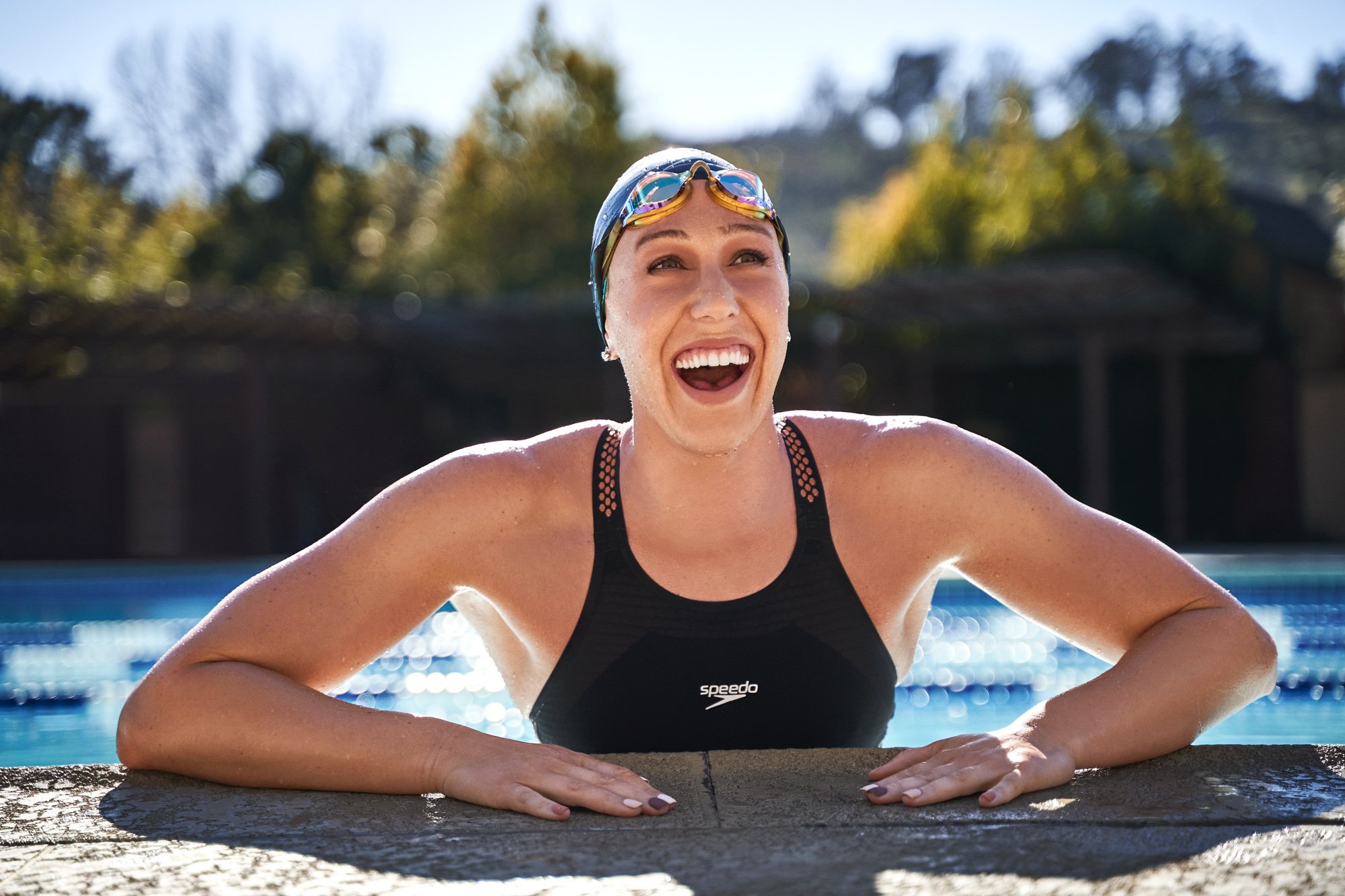
How Can I Stay Motivated When Competing at Swimming?
Abbey Weitzel gives Speedo her best advice on how to keep that unbreakable mindset while competing at the highest level.

